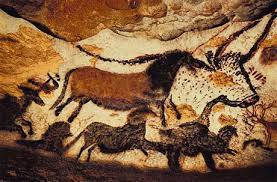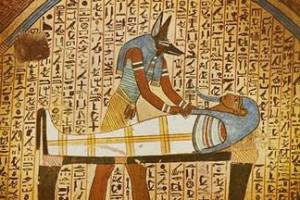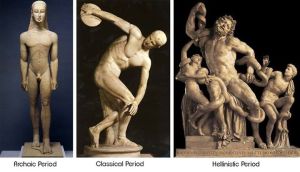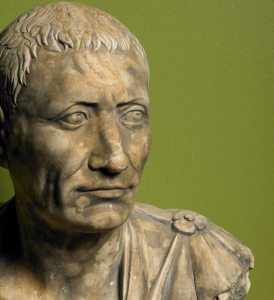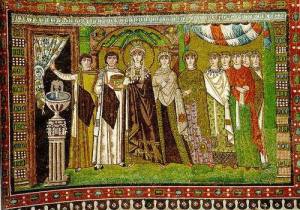The History of Art in One Minute Lessons: Part 1
The Stone Age (30,000 b.c.–2500 b.c.)
Ancient Egypt (3100 BC-30 BC)
The art from Ancient Egypt shows a heavy focus on the afterlife, with surprisingly little artistic change over the course of 3000 years. Much of the artwork had to do with their religion, and most were never intended to be seen. They were designed to benefit a divine or deceased recipient. The art in tombs was meant to assist the deceased in the afterlife. Another characteristic attributed to the art of Ancient Egypt is the method in which 2-dimensional objects were represented. Each object was rendered from its most recognizable angle. This is why images of people show their face, waist, and limbs in profile, but eye and shoulders frontally. Also, different classes were depicted by scale. Kings were the same size as deities, both being larger than the elite and far larger than the common Egyptian. Luckily, because of the incredibly dry climate, much of the art from Ancient Egypt has survived, though a majority of art was stolen from tombs by thieves over thousands of years. To see art from this period, visit on.fb.me/UYAQTD
Ancient Greece (c. 1000 BC)
The art of Ancient Greece is usually divided stylistically into four periods: the Geometric (beginning c. 1000 bc), Archaic (7th century bc), Classical (beginning c. 480 bc), and Hellenistic (beginning c. 336 bc).The Ancient Greeks were perfectionists in art. This especially holds true in their sculpture. Little is known about the Geometric, or Greek Dark Ages, period. But during the Archaic Period, we saw sculptors portraying both men and women with similar features, standing stiffly with arms at their sides. Later, during the Classical Period, they sculpted subjects in more relaxed postures and in action scenes. After Alexander the Great conquered much of Asia, Ancient Greek sculptors became influenced by the cultures and people they had conquered. This period is known as the Hellenistic Period, the time when new subjects including women, children, and common people appear in Greek art, and sculptors allowed for their statues to be admired from all angles.
Ancient Romans (c. 200 BC)
Around 200 b.c., the Ancient Romans began pillaging countries and looting the towns. After conquering Greece, they brought many Greek artists to Rome to make sculptures for them in the Greek fashion. The art of Ancient Greece had a great influence on the art of Ancient Rome. Only after Rome became a dictatorship around 27 b.c. did Roman art develop its own style. Sculpture was considered the highest form of art by Ancient Romans. Original Roman sculptures attempted to portray a real person, typically paying more attention to each person’s distinct face rather than trying to depict the ideal person like the Greek artists did. Most of the early sculptures were of a person or a mythological character, and were primarily used is decorations in public buildings, public parks, and private homes and gardens. One of the most popular types of sculpture in Ancient Rome was the bust. Wealthy Romans placed busts of their ancestors in the atrium of their homes as a way for them to show off their lineage. To see art from this period, visit on.fb.me/1oju6Mo

